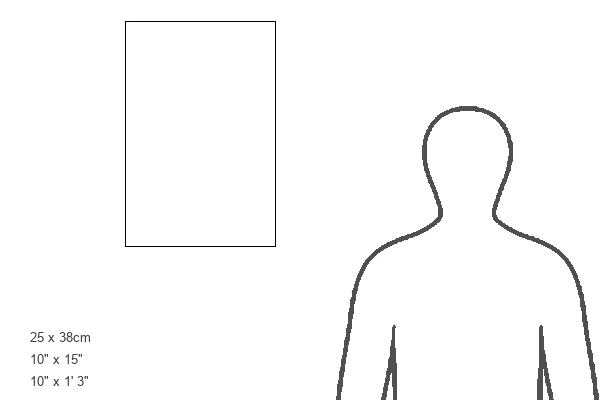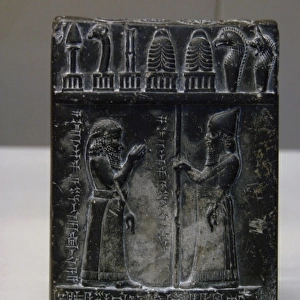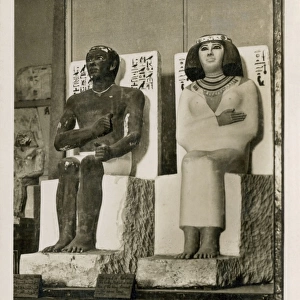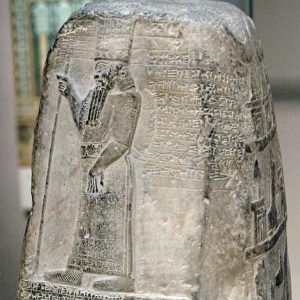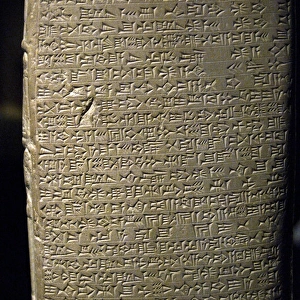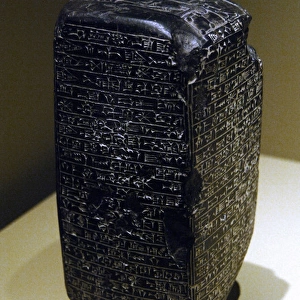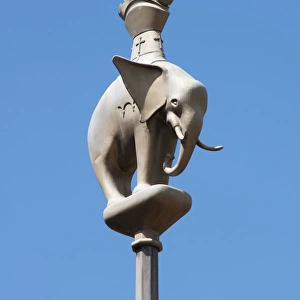Photographic Print > Europe > United Kingdom > England > London > Museums > British Museum
Photographic Print : Mesopotamian Art. Alabaster flower vase shaped as a woman ho
![]()

Photo Prints from Mary Evans Picture Library
Mesopotamian Art. Alabaster flower vase shaped as a woman ho
Mesopotamian Art. Alabaster flower vase shaped as a woman holding flowers. Dated between 700-600 B.C. It comes from Sippar. British Museum. London. England. United Kingdom
Mary Evans Picture Library makes available wonderful images created for people to enjoy over the centuries
Media ID 14378668
© Thaliastock / Mary Evans
Alabaster Curly Hold Mesopotamia Mesopotamian Sculpted Vase
15"x10" (37.5x25cm) Poster
Discover the captivating beauty of ancient Mesopotamian art with our exclusive range of Photographic Prints from Media Storehouse. This mesmerizing print features an intricately carved alabaster flower vase, dated between 700-600 B.C., depicting a woman holding flowers. Hailing from the ancient city of Sippar, this artifact now resides in the hallowed halls of the British Museum in London. Bring the rich history and culture of Mesopotamia into your home or office with this stunning and authentic piece of art. Order now and let the stories of the past come to life in your personal space.
High-quality poster prints are available in a range of sizes and are printed on 270 gsm semi-glossy silk finish poster paper. An affordable option for decorating any space, they are perfect for fixing straight onto walls. To ensure your poster arrives in good condition, we roll and send them in strong mailing tubes.
Our Photo Prints are in a large range of sizes and are printed on Archival Quality Paper for excellent colour reproduction and longevity. They are ideal for framing (our Framed Prints use these) at a reasonable cost. Alternatives include cheaper Poster Prints and higher quality Fine Art Paper, the choice of which is largely dependant on your budget.
Estimated Product Size is 25cm x 37.5cm (9.8" x 14.8")
These are individually made so all sizes are approximate
Artwork printed orientated as per the preview above, with landscape (horizontal) or portrait (vertical) orientation to match the source image.
FEATURES IN THESE COLLECTIONS
> Europe
> United Kingdom
> England
> London
> Museums
> British Museum
> Europe
> United Kingdom
> England
> London
> Related Images
> Europe
> United Kingdom
> England
> London
> Sights
> British Museum
> Europe
> United Kingdom
> England
> Posters
> Europe
> United Kingdom
> England
> Related Images
> Europe
> United Kingdom
> England
> Sculptures
> Europe
> United Kingdom
> Related Images
> Historic
> Ancient civilizations
> Mesopotamia
> Ancient Mesopotamian art
EDITORS COMMENTS
This exquisite Mesopotamian artifact, a flower vase shaped as a woman holding flowers, showcases the exceptional craftsmanship and artistic prowess of ancient civilizations. Dated between the 7th and 6th centuries BC, this masterpiece originated from the ancient city of Sippar, located in modern-day Iraq, which was part of the Mesopotamian civilization. The vase is made of alabaster, a prized material for sculpting due to its smooth surface and translucent quality. The woman depicted in the vase is sculpted with intricate details, her curly hair cascading down her shoulders, and her body gracefully holding a bouquet of flowers. The delicate petals of the flowers are expertly carved, adding to the overall beauty and elegance of the piece. Mesopotamian art is known for its intricate designs and symbolic representations, and this vase is no exception. The woman's form is not only an aesthetic pleasure but also holds symbolic meaning. The vase may have been used for religious or ceremonial purposes, with the woman representing fertility and the flowers symbolizing rebirth and renewal. This precious relic now resides in the British Museum in London, England, United Kingdom, where it continues to captivate and inspire visitors from around the world. The intricacies of the carving, the beauty of the alabaster material, and the historical significance of the piece make it a must-see for anyone interested in ancient history and art.
MADE IN AUSTRALIA
Safe Shipping with 30 Day Money Back Guarantee
FREE PERSONALISATION*
We are proud to offer a range of customisation features including Personalised Captions, Color Filters and Picture Zoom Tools
SECURE PAYMENTS
We happily accept a wide range of payment options so you can pay for the things you need in the way that is most convenient for you
* Options may vary by product and licensing agreement. Zoomed Pictures can be adjusted in the Cart.


